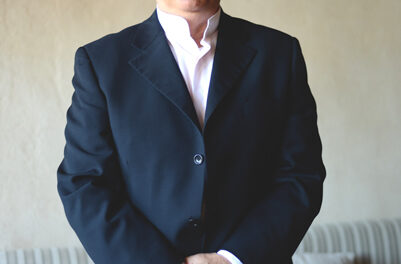It is amazing to me that four musicians can form a string quartet, adjusting their musical temperaments in order to form a single coherent musical voice. A quartet’s interpersonal dynamics must be six times as difficult as a marriage, and we know how difficult marriage can be. Yet there are a number of fine young string quartets, ensembles vying to replace those that are now in their late middle age. Such a quartet is the award-winning Enso String Quartet, which is appearing in this year’s Swannanoa Chamber Music Festival. This ensemble (formed in 1999 at Yale University) is composed of Maureen Nelson and John Marcus, violins; Melissa Reardon, viola and Richard Belcher, cello.
For the second half of Tuesday’s concert, at Kittredge Theater on the campus of Warren Wilson College, the only work was Claude Debussy’s Quartet in G minor, Op. 10. In Zen Buddhist painting, ensō, a circle, represents a moment when the mind frees and the spirit creates. In the case of the Enso String Quartet, that moment of creation extended to the full twenty-five minutes of the complex Debussy work. This was a remarkable performance, played with the confidence that comes only when an ensemble is sure of their own interpretation. It was a joy to hear.
The Debussy concluded an all-French program. As a friend pointed out at intermission, French music has its own character, rather like French cinema. I was reminded of Claire’s Knee, Eric Rohmer’s film that Vincent Canby described as coming “very close to being a perfect movie of its kind.” Like Claire’s Knee, all the music on this program and Debussy was individual in its concept, very French and almost perfect in its construction.
Bill Hoyt, Music Director of the Festival, arranged Erik Satie’s “Three Gymnopédies” for woodwind quintet (George Pope, flute; Cynthia Watson, oboe; David Bell, clarinet; Lynn Hileman, bassoon; and Mr. Hoyt on French horn). In his arrangement, the bassoon plays the repetitive bass line. The plaintive melodies are shared by flute and oboe (first Gymnopédie), clarinet and oboe (second) and oboe and flute (third) in an intelligent treatment.
Albert Roussel’s Trio for flute, viola and cello, Opus 40 is not constructed along the lines of a string trio; instead it often places the flute in tonal contrast with the low strings. This fine three-movement work reminded me of his best-known work, the ballet The Spider’s Feast, and deserves to be better known. Roussel is a vastly underappreciated composer, perhaps because of his neoclassicism in a time of atonal composition. His four symphonies are worth more attention, especially No. 1 and No. 4.
Vincent d’Indy is another composer underappreciated (except in France). Pianist Inessa Zaretsky joined the woodwind quintet for two dance movements by d’Indy: Sarabande and Menuet.
The first half of the program concluded with Francis Poulenc’s Trio for oboe, bassoon and piano. Ms. Watson, Ms. Hileman and Ms. Zaretsky gave a spirited performance of this work from 1929, a time when Poulenc (originally considered a lightweight member of “Les Six”) began to address more serious motives in his music but before the weight of World War Two weighed him down into his somber late period. This trio is indeed like Claire’s Knee. Extremely personal and very droll, it is an object of obsessive beauty. Maybe the French are on to something.













